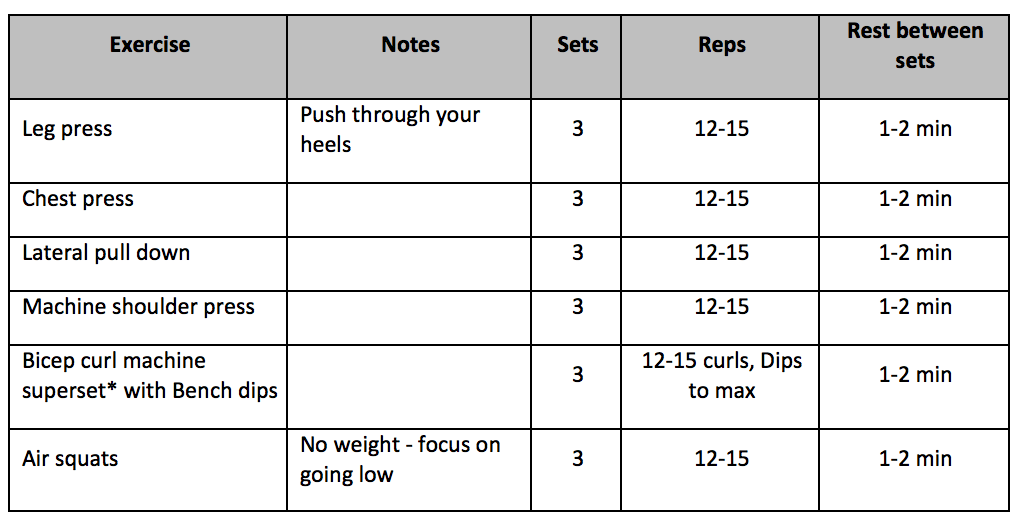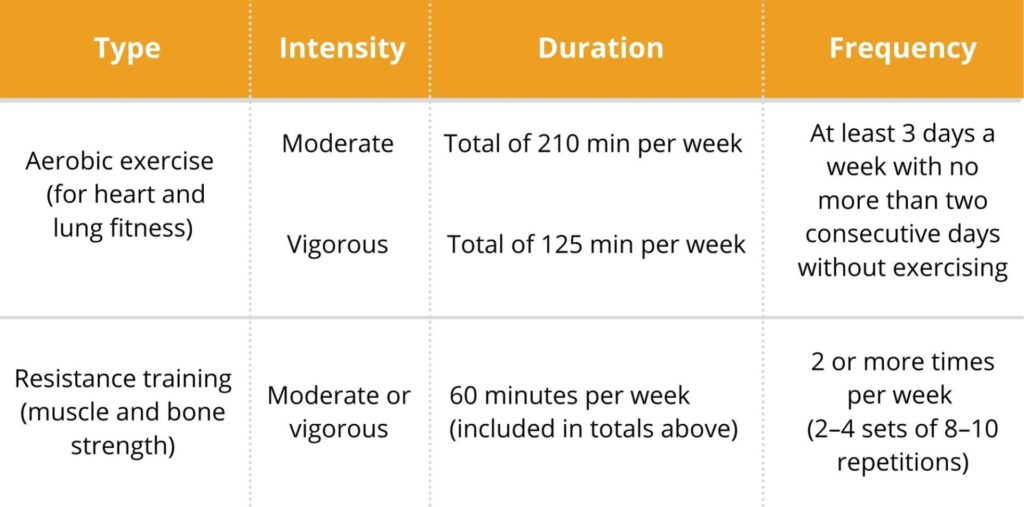Living with diabetes can present its own unique set of challenges, especially for women. Balancing blood sugar levels, managing medications, and maintaining a healthy lifestyle can all feel overwhelming at times. That’s why it’s crucial for women with diabetes to find exercise routines that are both comfortable and effective, without worsening their condition. In this article, we will explore some exercise options designed specifically for women with diabetes, providing you with the tools and knowledge needed to lead a well-rounded and active life.

This image is property of beyondtype1.org.
In This Article
ToggleTypes of Exercises
When it comes to exercise routines for women with diabetes, there are several types of exercises that can help promote overall health and well-being. These exercises can be classified into three main categories: aerobic exercises, strength training, and flexibility exercises.
Aerobic Exercises
Aerobic exercises, also known as cardio exercises, are activities that increase your heart rate and make you breathe harder. These exercises are excellent for improving cardiovascular health and can help manage blood sugar levels. Some popular aerobic exercises for women with diabetes include walking, swimming, cycling, and dancing. These exercises are low-impact and can be adjusted to suit your fitness level, making them suitable choices for individuals with diabetes.
Strength Training
Strength training exercises are essential for building and maintaining muscle strength. They can help improve insulin sensitivity, which is particularly beneficial for women with diabetes. Bodyweight exercises such as push-ups, squats, and lunges are ideal for building strength without the need for additional equipment. Resistance band workouts and dumbbell or kettlebell exercises are also great options for strength training. It’s important to start with lighter weights and gradually increase the intensity as your strength improves.
Flexibility Exercises
Flexibility exercises are often overlooked but play a crucial role in maintaining joint mobility and preventing injuries. These exercises help improve flexibility and range of motion, which can be particularly beneficial for women with diabetes who may have certain musculoskeletal complications. Yoga, Pilates, and stretching exercises are popular choices for improving flexibility. These exercises not only help improve physical flexibility but also promote relaxation and stress reduction.
Benefits of Exercise for Women with Diabetes
Exercise offers numerous benefits for women with diabetes, beyond just improving overall fitness. Incorporating regular exercise into your routine can have a positive impact on various aspects of diabetes management.
Improved Insulin Sensitivity
Insulin sensitivity refers to how well your body responds to insulin. With diabetes, insulin resistance is a common issue where the body’s cells aren’t effectively using insulin. Engaging in regular exercise can help improve insulin sensitivity, allowing your body to use insulin more efficiently. This can lead to better blood sugar control and decreased reliance on medication.
Blood Sugar Control
One of the most significant benefits of exercise for women with diabetes is improved blood sugar control. Physical activity helps your muscles use glucose for energy, which can reduce high blood sugar levels. Regular exercise also enhances insulin action, making it easier to maintain stable blood sugar levels throughout the day. It’s important to monitor your blood sugar levels before, during, and after exercise to establish any patterns or adjustments needed in your diabetes management plan.
Weight Management
Maintaining a healthy weight is crucial for individuals with diabetes, as excess weight can worsen insulin resistance and contribute to various health complications. Exercise can help with weight management by burning calories, increasing metabolism, and building lean muscle mass. By incorporating both aerobic exercises and strength training, you can create a well-rounded exercise routine that promotes weight loss or weight maintenance.
Cardiovascular Health
Individuals with diabetes are at an increased risk of developing cardiovascular diseases. Exercise plays a key role in reducing this risk by improving heart health and lowering blood pressure. Cardiovascular exercises, such as walking, swimming, and cycling, get your heart pumping and strengthen the cardiovascular system. Regular aerobic exercises can help improve circulation, reduce cholesterol levels, and enhance overall cardiovascular function.
Safety Precautions
Before starting any exercise routine, it’s essential for women with diabetes to prioritize safety. Here are some important safety precautions to keep in mind:
Consult with a Healthcare Provider
Before beginning a new exercise regimen, it’s crucial to consult with your healthcare provider. They can evaluate your individual circumstances, advise on any exercise limitations, and provide specific recommendations tailored to your health needs.
Monitor Blood Sugar Levels
Monitoring your blood sugar levels before, during, and after exercise is essential. This allows you to understand how physical activity affects your blood sugar and make any necessary adjustments to your medication or food intake. Checking your blood sugar levels regularly can also help prevent hypoglycemia (low blood sugar) or hyperglycemia (high blood sugar).
Stay Hydrated
Proper hydration is important for everyone, but it’s particularly vital for individuals with diabetes during exercise. Drink plenty of water before, during, and after your workout to stay hydrated and maintain optimal bodily functions. Avoid sugary drinks and opt for water or sugar-free electrolyte beverages.
Wear Appropriate Footwear
Diabetes can cause foot problems, such as neuropathy and poor circulation. Wearing appropriate footwear is essential to prevent foot injuries during exercise. Invest in comfortable, supportive shoes that fit well and provide adequate cushioning. Avoid shoes that are too tight or have rough seams that can cause friction and blisters.
Carry Identification
In case of any emergencies, it’s important to carry identification that identifies you as someone with diabetes. This can include a medical ID bracelet or necklace, indicating your condition and any specific needs or allergies. It’s crucial for healthcare providers or first responders to be aware of your diabetes diagnosis to provide appropriate care.
Creating an Exercise Routine
Creating an exercise routine that works for you is essential to stay motivated and establish a consistent habit. Here are some tips to help you create an exercise routine that suits your needs:
Set Realistic Goals
Start by setting realistic and achievable goals. Consider your current fitness level, time availability, and any limitations or preferences you may have. Setting realistic goals helps prevent burnout and ensures steady progress over time.
Choose Activities You Enjoy
To make exercising sustainable, choose activities that you genuinely enjoy. Whether it’s walking in nature, dancing to your favorite music, or practicing yoga, finding exercises that bring you joy will make it easier to stick with your routine.
Start Slowly and Gradually Increase Intensity
If you’re new to exercise or have been inactive for a while, start slowly and gradually increase the intensity and duration of your workouts. Listen to your body, and don’t push yourself too hard in the beginning. As you build strength and endurance, you can challenge yourself with more intense exercises.
Include a Variety of Exercises
Incorporating a variety of exercises into your routine not only helps prevent boredom but also ensures that you’re engaging different muscle groups and reaping the benefits of different types of exercises. Mix aerobic exercises, strength training, and flexibility exercises to create a well-rounded routine.
Monitor Progress
Keep track of your progress to stay motivated and see how far you’ve come. Note the duration and intensity of your workouts, how you feel before and after exercise, and any changes in your blood sugar levels. Monitoring your progress helps you identify what works best for your body and allows for adjustments to your routine if needed.

This image is property of eadn-wc04-11125113.nxedge.io.
Meal Planning and Exercise
Proper meal planning is essential for women with diabetes, especially when it comes to incorporating exercise into your routine. Here are some key considerations for managing your meals in conjunction with exercise:
Timing Exercise with Meals
When planning your exercise routine, consider timing your workouts with your meals. Engaging in physical activity after a meal can help prevent low blood sugar and provide your body with the necessary fuel for sustained energy.
Fueling Before and After Workouts
To optimize your performance and recovery, it’s important to fuel your body appropriately before and after exercise. Before a workout, consume a balanced snack or meal that includes carbohydrates for energy and protein for muscle repair. After a workout, focus on replenishing your energy stores and aiding in muscle recovery by consuming a combination of carbohydrates and protein.
Monitoring Carbohydrate Intake
As a person with diabetes, it’s vital to monitor your carbohydrate intake to effectively manage your blood sugar levels. Understanding the impact of different types of carbohydrates on your body can help you make informed decisions about pre-workout and post-workout snacks. It’s recommended to choose complex carbohydrates that provide a slower release of energy and have a lesser impact on blood sugar levels.
Balancing Protein and Fat Intake
Protein and fat are also essential macronutrients to consider when planning meals for exercise. Protein helps repair and build muscle tissue, while healthy fats provide sustained energy. Include lean protein sources such as chicken, fish, or tofu, and incorporate healthy fats from sources like avocados, nuts, and olive oil into your meals.
Tips for Consistency and Motivation
Staying consistent and motivated is key to a successful exercise routine. Here are some tips to help you stay on track:
Find an Exercise Buddy
Exercising with a friend or family member can make the experience more enjoyable and increase accountability. Find a workout buddy with similar fitness goals and schedules, and encourage each other to stick with your routines.
Schedule Regular Workout Sessions
Treat your exercise routine like any other important appointment and schedule it into your calendar. Set aside specific times during the week for physical activity, making it a priority in your daily life.
Track and Celebrate Achievements
Keep track of your achievements, no matter how small they may seem. Whether it’s completing an extra lap in the pool, adding more weight to your strength training exercises, or improving your flexibility in a yoga pose, celebrate your progress along the way.
Reward Yourself
Give yourself small rewards for sticking to your exercise routine. It could be treating yourself to a relaxing massage, buying a new workout outfit, or enjoying a guilt-free relaxation day. Rewarding yourself can help maintain motivation and make your fitness journey more enjoyable.
Focus on Overall Wellness
Remember that exercise is just one component of a healthy lifestyle. Focus on improving your overall wellness by incorporating other healthy habits such as a balanced diet, stress management techniques, and sufficient sleep. By taking a holistic approach to your health, you’ll maximize the benefits of exercise.

This image is property of www.bodytrack.com.au.
Conclusion
Regular exercise can be tremendously beneficial for women with diabetes. By choosing exercises that suit your preferences and incorporating them into your routine, you can improve insulin sensitivity, manage blood sugar levels, maintain a healthy weight, and enhance cardiovascular health. However, it’s essential to prioritize safety by consulting with your healthcare provider, monitoring blood sugar levels, staying hydrated, wearing appropriate footwear, and carrying identification. Creating an exercise routine that includes a variety of activities, setting realistic goals, and tracking your progress can help you stay motivated and consistent. Additionally, proper meal planning, timing exercise with meals, and balancing macronutrient intake are crucial for managing blood sugar levels and fueling your workouts. With commitment and a focus on overall wellness, you can reap the long-term advantages of regular exercise and lead a healthier, more active lifestyle.
Related posts:
 Body Measurement Journal for Women: A Comprehensive Tracker for Weight Loss and Fitness Goals – 110 Pages, 8.5″ X 11″ InchEmptyEntries, Weight Loss Progress Diary, Exercise Log, and Meal Planner – Perfect for Girls and Women
Body Measurement Journal for Women: A Comprehensive Tracker for Weight Loss and Fitness Goals – 110 Pages, 8.5″ X 11″ InchEmptyEntries, Weight Loss Progress Diary, Exercise Log, and Meal Planner – Perfect for Girls and Women
 The Cost of Diabetes Medication: A Barrier for Women
The Cost of Diabetes Medication: A Barrier for Women
 Long-Term Health Concerns for Women with Diabetes
Long-Term Health Concerns for Women with Diabetes
 Managing Diabetes and Improving Sexual Health for Women
Managing Diabetes and Improving Sexual Health for Women
 Evlution Nutrition CLA Pills: Stimulant-Free Belly Fat Burner for Men – Safflower Oil Supplement for Enhanced Weight Loss with Diet & Exercise (180 Servings)
Evlution Nutrition CLA Pills: Stimulant-Free Belly Fat Burner for Men – Safflower Oil Supplement for Enhanced Weight Loss with Diet & Exercise (180 Servings)
 Cozylady Smart Weighted Hula Ring Hoops for Adults: Achieve Weight Loss with Quiet Infinity Hoop, Fitness Hoop Plus Size 140CM, Adjustable Links, Exercise Belt & Measuring Ruler Included
Cozylady Smart Weighted Hula Ring Hoops for Adults: Achieve Weight Loss with Quiet Infinity Hoop, Fitness Hoop Plus Size 140CM, Adjustable Links, Exercise Belt & Measuring Ruler Included











No comment yet, add your voice below!